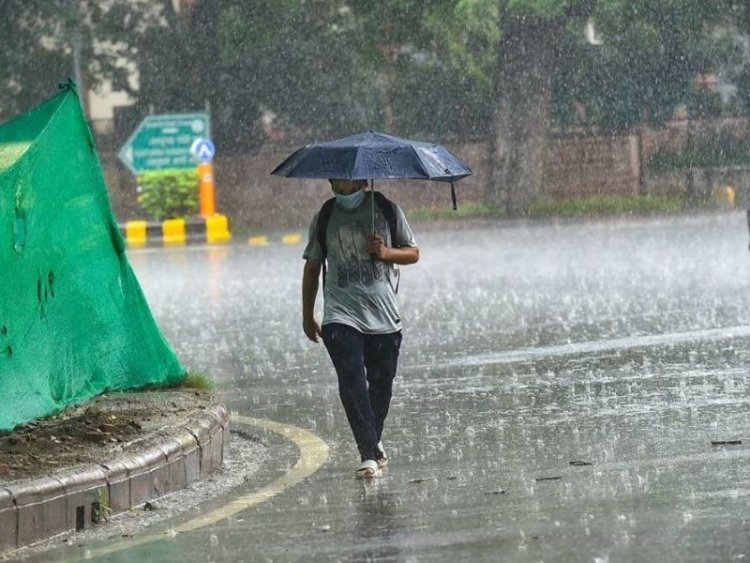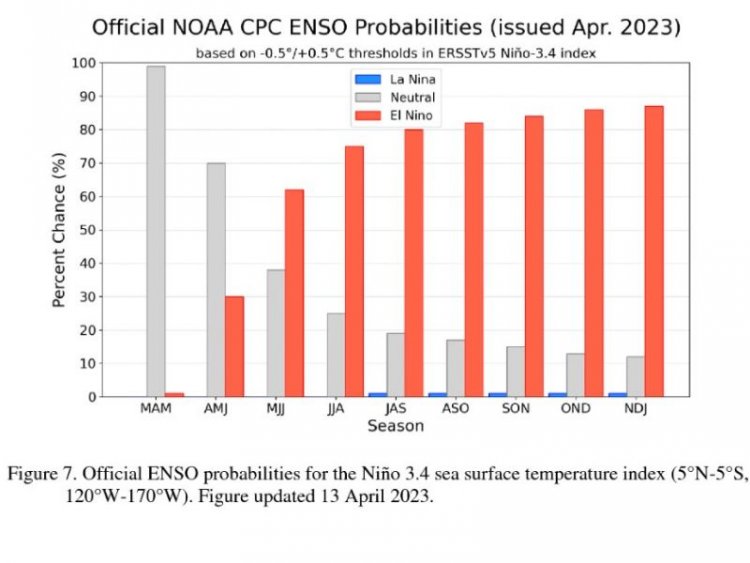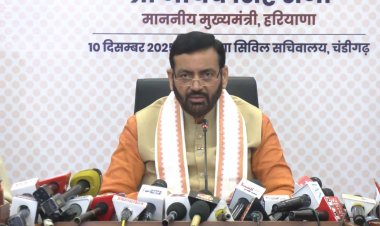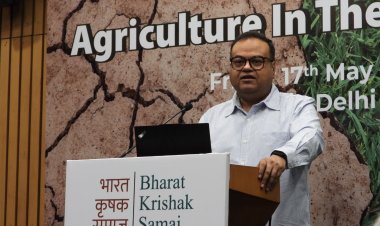The probability of El-Nino in May-July has increased to 62 per cent. It will have an adverse impact on monsoon rains in India. Three days ago, on April 11, the India Meteorological Department (IMD) forecast of normal monsoon this year. Whereas in June-July-August, the probability of El-Nino has increased to 75 per cent and in July-September to 80 per cent.
The US National Oceanic and Atmospheric Administration (NOAA) has issued fresh estimates of the possibility of El-Nino on April 13. In its earlier estimate, the probability of El-Nino during July-September was said to be 55 per cent. Based on this, the IMD had said in its estimates that there is a possibility of El-Nino in the second half of the monsoon season, hence monsoon will be normal in India this year.
According to NOAA estimates, there was La Nina until February, then neutral conditions in March, and then there is a possibility of El Niño, which is 62 per cent in the May to July period, 75 per cent in the June to August period, and in the July-September period it has become 80 per cent.
In the eastern and central parts of the Pacific Ocean, when the sea surface temperature (SST) becomes higher than normal, that situation is called El-Nino. In this situation, due to the warming of sea water, clouds formation takes place in this part of the Pacific Ocean and due to this, there is more rain in Peru in South America and the Gulf of America. But on the contrary, in the western part of the Pacific Ocean, which includes Australia and Indonesia, there is a possibility of weak cloud formation which results in low rainfall. It has an impact on Indian monsoon and affects rainfall in India adversely.

In the report of the NOAA, it has been said that in the last one month, there has been a major change in the Sea Surface Temperature in the Eastern Equatorial Pacific Ocean to be higher than normal. At the same time, figures of effective warming of the sea surface have been revealed in the South American coastal region last week, under which the Nino index has reached 2.7 degrees. Sea surface warming is prevailing over the entire region.
The area under average temperature has been higher than last month. El-Nino is declared when it is five degrees. This situation is going to happen between May and July. Monsoon begins in India in June and at that time sowing of kharif crops begins in rainfed areas.
The IMD, in its first forecast released for this year on April 11, had said that despite El-Nino, the monsoon is likely to receive normal rainfall this year. The Indian Meteorological Department has said in its forecast that there is a possibility of 96 per cent rainfall during the southwest monsoon (June-September) this year.
Releasing the forecast, IMD Director General M Mohapatra had said that there is a 67 per cent chance of above normal rainfall. The IMD had said that there is a possibility of El-Nino this year but it is the second part of the monsoon so the monsoon will be normal.
IMD's second monsoon forecast will be released in the last days of May, by then the El-Nino situation will also be clear and at that time the exact forecast of monsoon can be revealed.
But the latest forecast by the American Prediction Center is going to raise a big question for the forecasts issued by the IMD. The Indian monsoon has been adversely affected most of the time in the event of a strong El-Nino. There have been few exceptions when the monsoon has been normal in India despite a strong El-Nino.
Due to four consecutive good monsoons, the rate of growth of agricultural production in the country has been good. It has rained more than normal in these years. But if the monsoon is not normal this year, it will have an adverse effect on the Indian economy.
Farm equipment, tractor makers and FMCG companies were hopeful of better business after the IMD forecast a normal monsoon. But this report of the NOAS can prove to be troublesome for all of them. At the same time, due to better agricultural production, it can prove to be a new challenge for the Reserve Bank of India's efforts to control inflation.





 Join the RuralVoice whatsapp group
Join the RuralVoice whatsapp group







































